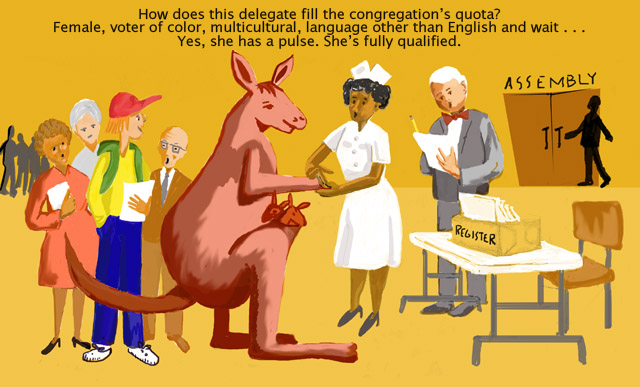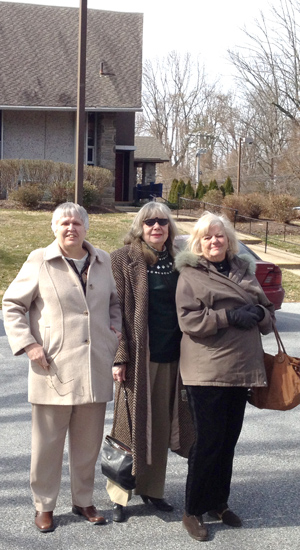 Is there something to be learned from this?
Is there something to be learned from this?
Thrivent, once known as Lutheran Brotherhood, is a financial fraternal association serving the members of all Lutheran denominations.
Redeemer’s Thrivent members recently received a ballot to vote on a proposal to expand their service offerings to other Christian groups. (They must not have heard that we’ve been kicked out of the Lutheran Church.)
It was inevitable as the Lutheran population dwindles that the financial fraternity would have to expand its economic base and welcome more people into the brotherhood.
This raises some questions about church voting. If an insurance company can open a vote to every member, why do we still rely on representative assemblies voting for us at the Synod level? Might the Digital Age afford us a better way?
Representative voting relies on voters having the knowledge and experience to do a conscientious job. In this regard, the voting procedure within the ELCA is seriously flawed.
The Evangelical Lutheran Church in America adopted a quota system at the time it was formed 25 years ago—before the power of the internet was unsheathed. The original system (faulty as it was) has been tinkered with ever since. Votes are assigned by size of church, gender, language, and age. There is no good way to prove some of these characteristics. Redeemer was a church with a majority membership of color, a strong youth population and multi-lingual. Not only were we never allotted extra representation for any of these demographics, as the bylaws allow, but the bishop (at the last minute) declared us ineligible to send any voting representatives to the 2009 Synod Assembly—which the bylaws do not allow.
None of the voters at that Assembly raised any questions. We’ve been excluded ever since.
Under the quota system, credentials for representatives create a false demographic—an illusion of inclusion. A scan of the floor of a Synod Assembly might make it seem like SEPA Synod is highly diverse. We’ve visited 57 congregations. Diversity is the exception.
Twenty years of liturgical gerrymandering may have resulted in a voting pool that meets inclusion criteria but fails to be representative—or effective.
For example, many congregations have a majority female membership. They must come up with a male if they are to have the proper number of votes at Assembly. The males in the congregation may have no interest and are borderline involved in church government but genitalia is valued above knowledge and commitment.
An inexperienced voting assembly is putty in the hands of church leaders. How else can our Synod explain adopting six-figure deficits at a time when giving was down across the board and never stopping to think how those deficits would be overcome and at whose expense?
Voters who don’t understand the issues or consequences of their decisions follow the pack.
There are important documents and procedures which control the powers of the Assemblies and provide safeguards to the congregatons. It’s not just the constitution, with which some people have at least vague familiarity. It includes the Articles of Incorporation, which define the powers of the Assembly and control the extent to which the constitution can be changed. Practically no one is familiar with this document. For one thing it forbids the seizure of congregational property without the consent of the congregation and puts this matter outside the authority of the Synod Assembly.
Without knowledge of church government, Synod Assembly has become a venue to present a synod’s wish list for rubberstamp approval—not a venue for dialog or debate.
All of this can be revamped for greater participation in an age where this is expected.
It is now entirely possible to allow all members a vote, but failing that they can at least be afforded a voice. It would take some thinking to make it work but it could bring benefits, fresh air, and true representation into the world of Church.
- Regional offices will be forced to really engage with their constituency.
- Congregations will have to be realistic about their memberships.
- They, too, would have reason to engage members on issues that matter.
- Members would have a sense that their involvement can make a difference.
- Vested members may increase participation and giving.
Today issues can be presented to all church members online well in advance of the Assembly date.
During this time, the regional office is free to communicate with all members of the church. Congregations have equal freedom to debate issues. Even individuals can take discussions online. People might actually become involved.
If it is too unwieldy to count each person, a congregation’s representatives can gather after the issues for debate have been aired for a few weeks. A one-day assembly is all that would be needed.
It’s something to think about.
It could be truly transforming!
If insurance companies can count every vote, so can churches.
Voting kangaroos have done enough damage!






